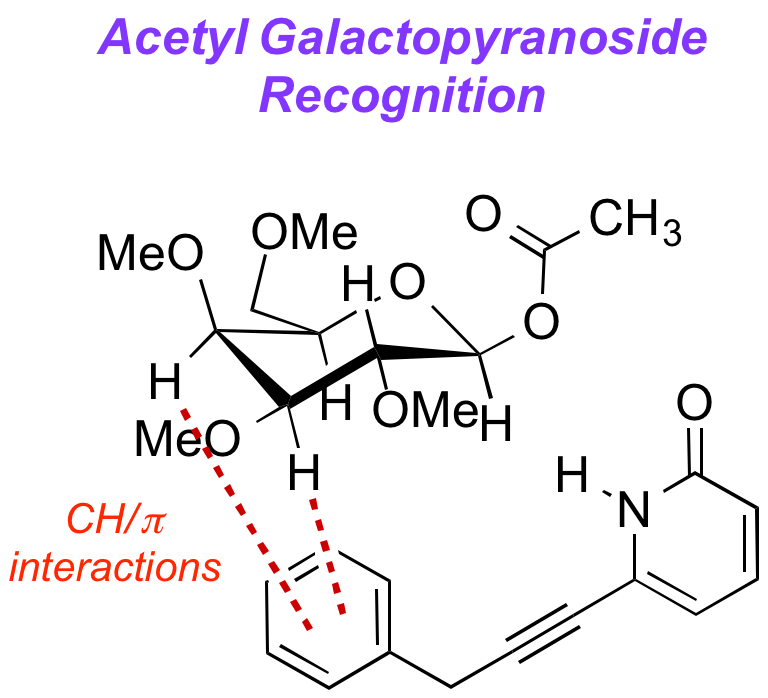
Submission Preparation Checklist
As part of the submission process, authors are required to check off their submission's compliance with all of the following items, and submissions may be returned to authors that do not adhere to these guidelines.
Cover Letter
Cover letter.
- Should be addressed to the Editor-in-Chief: Prof. Alberto Vela
- Include the title, names of the authors and type of submission (full article/research or review*)
- Describe the major findings of the research, impact and novelty.
- Why does the manuscript fit into the scope of the J. Mex. Chem. Soc?
- The manuscript is original (not copied)
- Declare if part of the manuscript has been submitted or published before in any other journal.
- Declare conflicts of interest.
- The corresponding author, or the person submitting the manuscript in their behalf, accepts the responsibility of including as co-authors all persons appropriate and none inappropriate.
- Add a potential list of four reviewers.
- Sign with full name and contact information.
- File shouldn't exceed 2.5 MB.
*The J. Mex. Chem. Soc. only receives reviews under invitation. If you have been officially invited by the editorial board or the Editor-in-chief to send a review to the J. Mex. Chem. Soc. please specify it.
Graphical Abstract
Graphical abstract. Corresponds to an image (clear visual summary) that concisely describes and gives a quickly understanding of the main findings or the importance of the research at a glance. It could be a key figure or scheme of the submission or it could be specially designed for this purpose. The graphical abstract will be displayed solely in the table of contents and it will be also Peer Reviewed.
- File type: .JPG or .PNG
- Image size: minimum 600 pixels
- Resolution: minimum 600 dpi
- File name: GA
- Image could be fully or partially colored or black & white, as the authors prefer.
- File size: The file shouldn't exceed 2.5 MB.
- Other: Do not include additional text as title of the submission or authors information, abstract, or a heading “Graphical abstract”. Do not insert the image in an office file or alike, that would decrease the quality of the image.
i.e. Graphical abstract obtained from: Cuetara-Guadarrama, F.; Ramírez-Gualito, K.; Cuevas, G. J. Mex. Chem. Soc. 2017, 61. DOI: http://dx.doi.org/10.29356/jmcs.v61i3.346

Manuscript Formatting
Manuscript file type and characteristics
- The J. Mex. Chem. Soc. only will receive contributions in MS word file. Do not protect the files from editing; most of the times the reviewers add comments directly to the manuscript files.
- The body of the manuscript should be inserted in simple format, thus, avoid using double columns or templates.
- All pages of the manuscript must be numbered.
- Files shouldn't exceed 2.5 MB including figures, if it exceeds the maximum allowed by the system we encourage you to extract the figures and send them as requested below, just leaving its figure caption within the body of the manuscript.
Manuscript Page 1 content
- Article title. Concise and informative.
- Author(s) name(s). First names and surnames, do not use initials for names, the corresponding author(s) should be indicated with an asterisk*.
- Affiliations. Use numbers in superscripts.
- Abstract. Single paragraph (80-250 words). Should be very clear and concise summarizing the content of the manuscript. Remember that the abstract is the only part that the potential referees sees when they are invited to make a review; also, is the part that readers see when searching through electronic databases. The abstract is the key for people to decide if the article is interesting or useful to them or not.
- Keywords. Maximum 5, separated by semicolon “;”.
- Resumen**. Corresponds to the Spanish translation of the abstract.
- Palabras Clave**. Spanish translation of the keywords.
*The corresponding authors mailing address, phone number, fax number or e-mail address should be included.
** Do not provide resumen and palabras clave if you are not native Spanish speaker or if it is not a Spanish certified translation.
Manuscript Page 2 content
The file should contain the text of the article. The requested organization is: Introduction, Experimental, Results and Discussion, Conclusion, Acknowledgements, References, Tables and Figure captions. All the sections of the paper must be presented with the utmost conciseness and clarity.
- The measurements and data should be given in the International Units System.
- Abbreviations should be used consistently through the text.
- Journal abbreviations, technical terms and nomenclature should be those used by Chemical Abstracts.
- Avoid reiteration of information.
- Figures, schemes, tables, and equations should be used for purposes of clarity and brevity.
- Figures should be numbered consecutively with Arabic numbers, and should be referred as: Fig. 1, Fig. 2, figures 6-8
- Equations and formulas should be inserted by using the office or alike equation tool.
- Tables should be numbered consecutively with Arabic numbers.
About Introduction section
Should establish the background and the nature of the problem investigated in the manuscript.
- Should go from the general to the particular.
- Include only relevant references.
About Experimental section
- The experimental section should contain all the information necessary for reproducibility.
- Description of standard techniques and methods are not needed.
- Reporting unsuccessful experiments is not needed.
- Describe only non-standard apparatus; commercially available instruments must be referred by their stock numbers.
- Convincing evidence to confirm the identity of a compound should be provided.
- All new compounds should be fully characterized with relevant and detailed spectroscopic data.
- For physical and spectroscopic data, the following general style must be used:

About Results and Discussion section
- Results should be organized into an orderly and logical sequence.
- For computational results, pertinent data such as force field parameters and equations should be included, to allow readers to repeat and reproduce the calculations.
- Figures, tables, and equations should be used for purposes of clarity and brevity.
- The discussion should present only the new results and relate them to existing knowledge in the field, and a paragraph summarizing the principal conclusion of the article is recommended, by relating it back to the problem or question you posed in your introduction.
About Conclusion section
Highlight the novelty and significance of the research. Impact to the field, present and future for the presented work.
About Acknowledgement section
Include contributors that are not authors or co-authors, sources of funding and support.
About References
- When referencing in the text. Use numerals in order of appearance between brackets, i.e. [3-10], [18] or [21a,23b,27]; they should coincide with the entries in the References section at the end of the manuscript. The references should appear at the end of the sentence (after punctuation) or after the relevant word or compound.
- References section. References should be listed according to their appearance in the text. For the referencing, the J. Mex. Chem. Soc. uses the journal abbreviations defined in Chemical Abstracts Service Source Index (CASSI), if the abbreviation is not found or recognized, cite the full journal title.
- References should be cited according to the ACS citation guide. Short style for journals citation. i.e.:
- Kingsbury, J. S.; Corey, E. J. J. Am. Chem. Soc. 2005, 127, 13813-13815.
- Vanden Berghe, D. A.; Vlietinck, A. J., in: Methods in Plant Biochemistry, Vol. 6, Hostettmann, K., Ed., Academic Press, London, 1991, 47-70.
- Lehn, J.-M. Supramolecular Chemistry. VCH, Ed. Weinheim, 1995.
- Kadin, S.B. US patent 4,730,000 1988. (CA 110, P23729y)
- http://www.jmcs.org.mx, accessed in January 2005
- Sheldrick, G. M. SHELXL-93. Program for Crystal Structure Refinement. University of Göttingen, Germany. 1993.
**If DOI is available for the article, include it at the end of the reference, i.e.
- Kingsbury, J. S.; Corey, E. J. J. Am. Chem. Soc. 2005, 127, 13813-13815 DOI: http://dx.doi.org/10.1021/ja055137+
About figures, schemes, tables and equations/formulas
- Besides their inclusion in the body of the manuscript, send figures and schemes according to the following characteristics:
- File type: .JPG or .PNG
- Image size: minimum 600 pixels
- Resolution: minimum 600 dpi
- File size: Each file shouldn't exceed 2.5 MB individually.
- File name: Fig. 1, Fig. 2, scheme 1, etc.
- Image could be fully or partially colored or black & white, as the authors prefer.
- Other: Do not include additional text as title of the submission or authors information, or a heading with figure name and caption.
- Note: Each figure/scheme should be sent in different files.
- Tables should be sent in MS modifiable word file. Include the caption of the tables.
- If needed you will be requested to send the equations/formulas as an image file according to resolution, image size and file type specified for figures and schemes.
Supporting Information
It belongs to any additional data and peripheral discussion; it should be presented in English, and it is subject of peer reviewing along with the manuscript. The information included should not be repeated in the manuscript. The author bears full responsibility for the content of the Supporting Information. Extensive tables, graphs, spectra, calculations, detailed experimental methodology, and other material beyond a modest content in the published paper may be included. File shouldn't exceed 2.5 MB. The supporting information is excluded from DOI assignment.
Conflicts of Interest
Authors must disclose all conflicts of interest including financial and personal relationships. The corresponding author must reveal at the time of submission either that there is no conflict of interest to declare, or should disclose potential conflicts of interest that will be acknowledged in the published article.








